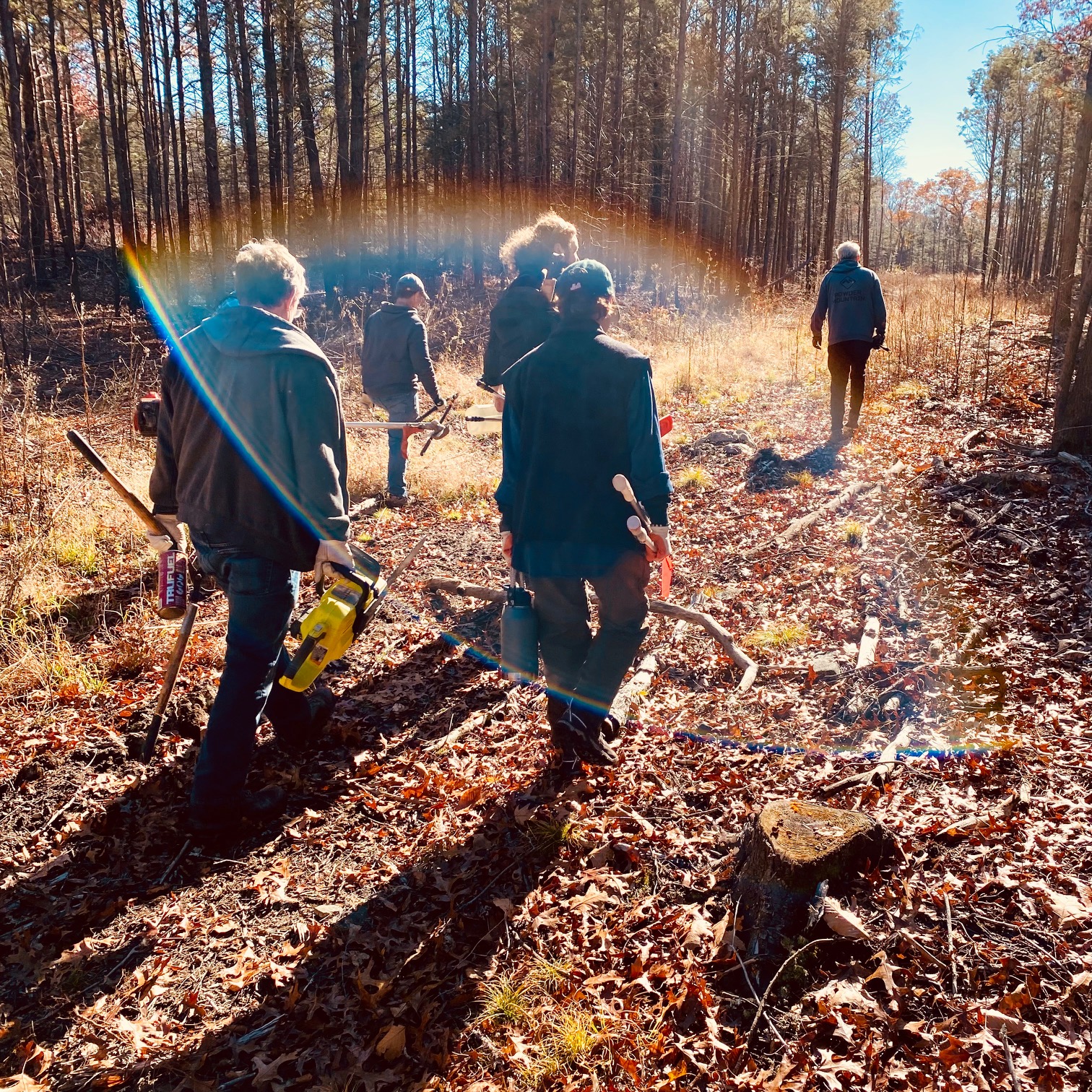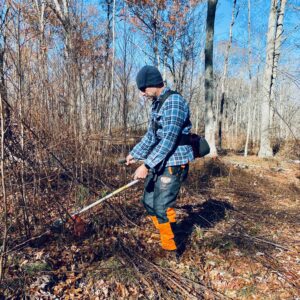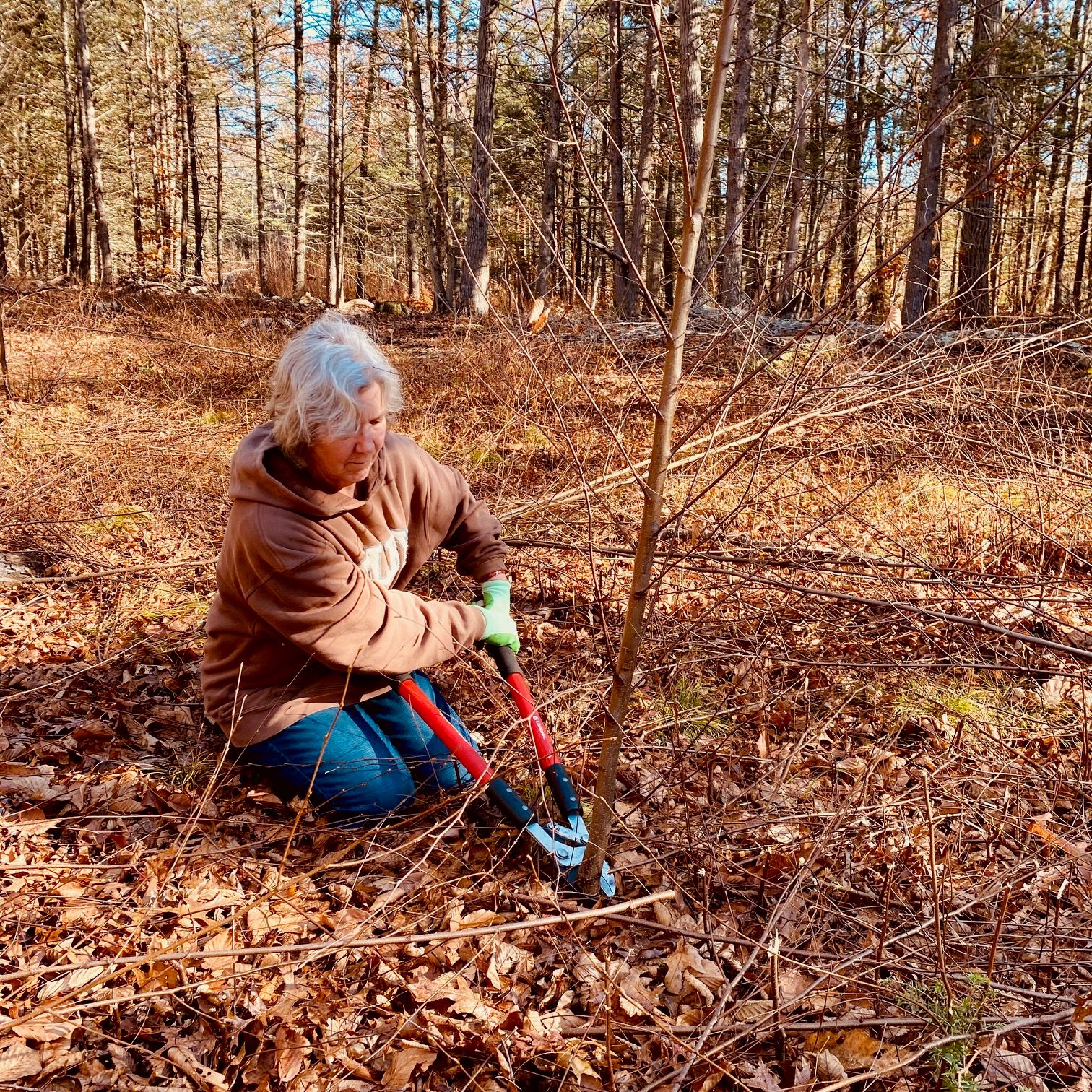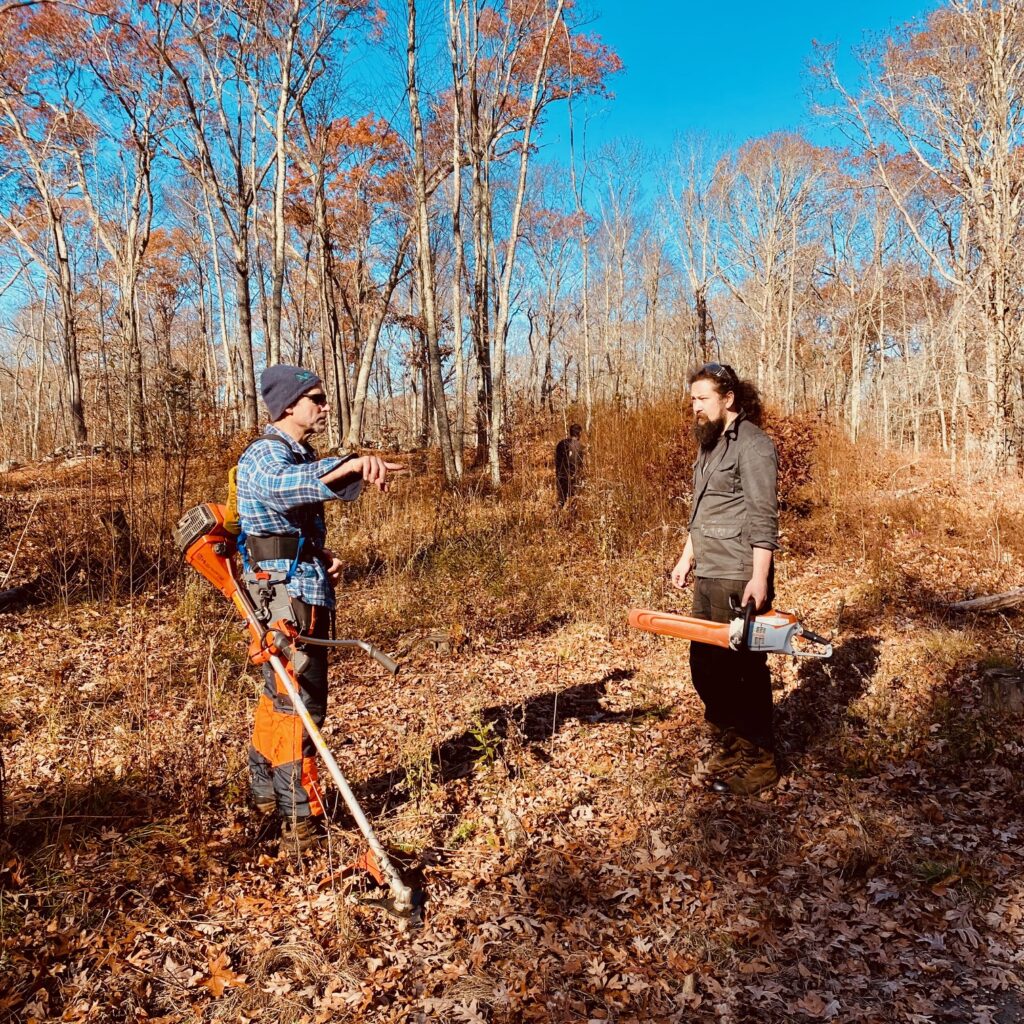
Interest remains high in Avalonia’s climate resiliency work at the Hoffman Preserve in Stonington, Connecticut
If the turnout at our most recent stewardship event at Hoffman Preserve is any measure, it is safe to say that there remains a high degree of interest in and commitment to the climate resiliency efforts initiated there in 2018.
This is especially important because the double-edged sword of any planting project, climate resilient or otherwise, is that the soil disturbance and increased sunlight, the very conditions that are necessary for many new plantings to thrive, also favor invasive plants, both native and non-native.
On November 19th, nearly twenty volunteers met at the Hoffman Preserve to support Avalonia’s ongoing stewardship efforts there. Their tasks for the morning were to monitor the status of bare-root seedlings planted in 2021 and 2022 and to clear back the grey birch saplings and other woody competitors that threaten to overwhelm them.
 Releasing the young oak, persimmon, hickory, hornbeam, serviceberry, black tupelo, sweet gum, and Virginia and loblolly pine trees from the stranglehold of faster-growing vegetation will be a perennial task, at least for the next few years.
Releasing the young oak, persimmon, hickory, hornbeam, serviceberry, black tupelo, sweet gum, and Virginia and loblolly pine trees from the stranglehold of faster-growing vegetation will be a perennial task, at least for the next few years.
While certainly not easy work, there is a collective satisfaction in knowing that the “breathing room” we have created for these vulnerable seedlings, via loppers, clippers, and brush saws, is a critically important piece in the successful establishment of a more climate-resilient forest.


Photos by Jeff Alexander
